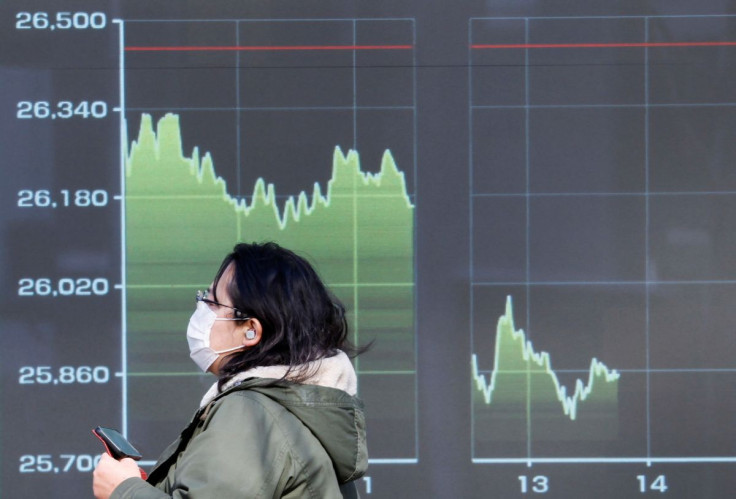Stock Rally Losing Puff As Economic Growth Doubts Grow

Asia's stock markets eked out their fourth straight session of gains on Wednesday, but the recent rally lost momentum as nagging doubts about inflation and the drag from rate rises overshadowed bits and pieces of good news about the global growth outlook.
MSCI's broadest index of Asia-Pacific shares outside Japan rose 0.5% and is on its longest winning streak since February. Japan's Nikkei rose 0.6% and miners led Australian shares about 0.9% higher.
Gains followed a surge on Wall Street and a slump in the dollar as investors pushed worries about inflation and recession to the back of their minds.
But analysts doubted it could last and both the greenback and futures were steadying in Asia. S&P 500 futures fell 0.2%, Nasdaq 100 futures fell 0.4% while FTSE futures were flat and European futures rose 0.2%.
"After plunging into last week, shares could have a further near-term bounce," said Shane Oliver, chief economist and head of investment strategy at Australia's AMP Capital.
"But risks around inflation, monetary tightening, the war in Ukraine and Chinese growth remain high and still point to more downside in share markets," he said.
The dollar held firm after an overnight kicking, helped by Australian wage growth missing forecasts, which pulled down the Aussie dollar briefly below $0.70.
The greenback steadied on the euro at $1.0534 and paused a strong bounce for sterling at $1.2480 that followed solid labour data on Tuesday.
Inflation figures in Britain and Canada due later on Wednesday could also shift rate expectations and move the currencies. The dollar index hovered at 103.370.
"It's still far too early to call a long term peak in the dollar and retracements should be shallow," said analysts at Westpac. "But some two-way consolidation between 102-104 is likely near-term," they added, referring to the dollar index.
NEGATIVE SHOCKS
Positive data had helped the short-term mood, with U.S. retail sales meeting forecasts for a solid increase in April and industrial production beating expectations.
Data on Wednesday showed Japan's economy shrank less than expected in the first quarter.
Shanghai is also edging toward an end to its protracted lockdown and China's vice-premier made soothing comments to tech executives in the latest sign of a let up in pressure.
However, any good news was offset by the reminder from Federal Reserve Chair Jerome Powell that controlling inflation would demand rate rises and possibly some pain.
Investors have priced in 50 basis point U.S. rate hikes in June and July and see the benchmark Fed funds rate nudging 3% by early next year.
Treasuries of all tenors were sold on Tuesday in anticipation of rising rates, but the gap in yield between short- and long-dated bonds is narrowing as markets price a risk that hikes this year will drag on longer-run growth.
Benchmark 10-year Treasuries were steady in Asia and the yield sat just below 3% at 2.9805%.
European yields are also rising as European Central Bank say a 50 basis point rate hike should not be ruled out.
Commodities have rallied with stocks this week as markets have found reasons to hold out growth hopes, but oil dipped Tuesday and there were signs of waning momentum on Wednesday.
Brent crude futures were up 0.7% at $112.73 a barrel and U.S. crude futures rose 1.2% to $113.83 a barrel.
S&P Global Ratings cut growth forecasts for China, the United States and the eurozone.
"The global economy continues to face an unusually large number of negative shocks," said chief economist Paul F. Gruenwald.
"Two developments have altered the macro picture," he said, being Russia's invasion of Ukraine which sent commodity prices spiking and inflation, which has turned out to be higher, broader and more persistent than first thought.
(Editing by Sam Holmes and Kim Coghill)
© Copyright Thomson Reuters {{Year}}. All rights reserved.





















